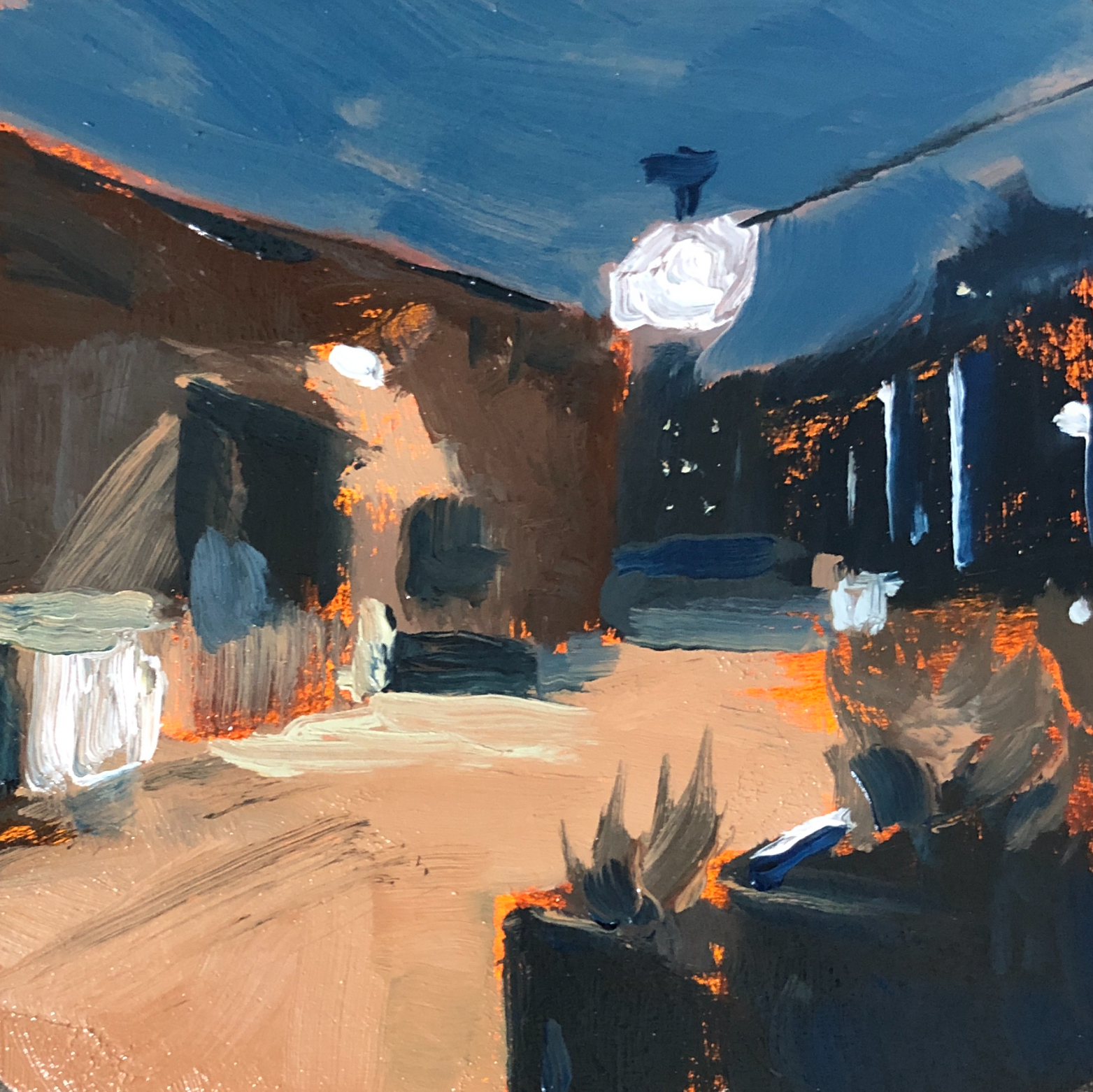For today’s ARTicle, we are going to discuss blending and three common ways to blend edges.
We will discuss some examples, look at some visual diagrams, and finish with an exercise.
Let’s get started.
In the last ARTicle, we discussed hard and soft edges and everything in between. Blending those edges is how to achieve such a multitude of edges. Let’s look at three examples.
There are three common ways to blend edges: by using a dry brush, using a between color or value, or a combination of both.
Using a dry brush is probably the most common and well known technique. Essentially all it entails is mixing one color and value shape into another. See the example below.

The benefit of this technique is that it’s quick and efficient and you don’t have to be a master at color mixing. Now let’s look at some shortcomings.
The down side is that it’s easy to over blend and lose beautiful brushwork, resulting in a potentially flat painting. The next technique helps avoid this problem.
Another option is to use a between color and value. In other words, brush in a color or value that is somewhere between the two color shapes you want to blend. See the example below.

With this technique you will achieve a much more painterly effect with beautiful brush strokes, rather than a painting that appears overworked and flat. But there is still one more option.
The final option is to use the best of both techniques. Why use just one tool when you can use multiple? You may find that using a mid tone to blend doesn’t always give you the effect you desire. In that situation you may find that blending with a dry brush, your finger, or any other tool can give you exactly the edge you desire. Now let’s finish with an exercise.
To master blending values, try painting an apple on a small panel. This will help you efficiently practice blending without being slowed down by drawing.
Do one a day until you feel confident in the progress you have made. Experiment with different lighting directions and temperatures to keep the exercise fresh.

In the next article we will discuss how connecting light and dark values can make a strong composition and make starting a painting easier.
Enroll in Academy Bry if you don’t want to miss an article and have them sent directly to your inbox.
Find more helpful ARTicles by clicking one of the categories below.

